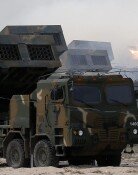Vacant Houses, Vacant Policies
It was confirmed that one-third of multi-family rental houses, which have been run on a trial basis by the government since the end of last September in a bid to stabilize the destitute peoples housing environment, still remain vacant despite the fact that almost 10 months have passed. The number of rental houses where needy people live as intended stood at less than 40 percent.
Despite the current situation, the government has decided to expand the number of houses for its project from the previous 10,000 by 2008 to 50,000 by 2015 through evaluating its model project as successful, which is raising concerns that the project is being pushed ahead in a rough-and-ready way.
According to the Ministry of Construction and Transportation (MOCT) and the Korea National Housing Corporation (KNHC) on July 20, among a total of 503 multi-family houses which were purchased by the government from Gangseo-gu, Gwanak-gu, Nowon-gu, Yeongdeungpo-gu, Jungnang-gu in Seoul in a bid to lease out to the destitute people in Seoul, the number that still remains vacant due to non-occupancy reached 168, or 33 percent of the total.
Even among the remaining, 140 houses could not be used as rental housing, since those who held their houses with a lease on a deposit basis had already lived there before the government purchased them.
The number of houses where the destitute live as planned merely reached 195, or 39 percent of the total.
According to KNHC, the average cost of buying a house is 70 million won. This indicates that 21.5 billion won for purchasing a total of 307 houses which have not been utilized as earlier planned is going to waste.
In particular, as for Gwanak-gu which owns 153 model houses, the number of vacant houses (59) surpassed the number being used as rental houses (53).
As for Gangseo-gu which owns 193 houses, only 81 houses are being used as rental houses while 45 houses are being occupied by existing those who took their houses by lease on a deposit basis, 66 houses remained vacant, and one remaining house is being used as a warehouse.
In addition, 47, or 38 percent of the model houses, (125) in Nowon-gu; eight, or half of its total houses, (16) in Yeongdeungpo-gu; and only six houses, or less than half of its total houses, (16) in Jungnang-gu are being utilized as rental houses for the destitute.
In response, KNHC and officials in charge of this project at each ward office pointed out some reasons: many houses where those who held their houses by lease on a deposit basis are living; difficult standards of singling out occupants; and complicated selection procedures.
MOCT said, Taking into account that as long as there are many vacant houses, maintenance expenses for them will increase, and it will sooner or later come up with complementary measures such as relaxing the standards of selecting occupants of houses and simplifying the selection procedures in a bid to increase the occupancy rate.
Jae-Seong Hwang jsonhng@donga.com





![“먼지인 줄 알고 만졌더니?” 서랍 구석 ‘해충 배설물’ 습격 [알쓸톡]](https://dimg.donga.com/c/138/175/90/1/wps/NEWS/IMAGE/2025/12/19/133001422.3.png)

